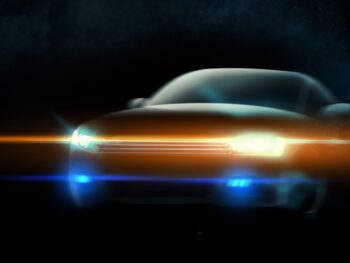Headlight glare stopping dazzled drivers from taking to the wheel
Headlight glare is now so bad that a quarter (25%) of affected motorists no longer drive at night while 22% wish they could avoid driving.

A government-commissioned project on headlight glare is due to report back on findings this summer
The RAC’s major new study on dazzled drivers found almost all drivers agree vehicle headlights can be too bright – more than a third (36%) believe most are, with a further 59% saying some of them are.
Under-35s, and those in conventional hatchbacks, estates and saloons, are more likely to say most headlights are too bright, cited by 41% and 38% of these groups.
But even three in 10 drivers (29%) of higher-riding vehicles, such as SUVs, think most headlights are blinding too.
Six in 10 drivers (61%) who suffer from glare say the problem has worsened in just 12 months, with only a quarter (26%) disagreeing.
The data also shows potential impacts to road safety.
Eight in 10 (79%) dazzled drivers find it hard to tell when some vehicles are indicating, while 77% say it’s difficult to judge the position of oncoming vehicles on the road when their headlights are so bright. Similar proportions struggle to judge the speed of these vehicles (74%) and how far away they are (67%), suggesting dazzling headlights are having a profound impact on some motorists’ confidence behind the wheel.
Official government statistics show that since 2013, there has been an average of 280 collisions a year where dazzling headlights were a contributory factor. Of these, six a year involved someone losing their life, although this only includes those collisions where a police officer attending can be sure that headlight dazzle was a factor.
A government-commissioned project to understand factors involved in headlight glare and how to address them is currently underway and due to report back by the summer.
The project follows campaigning led by the RAC, Baroness Hayter, the College of Optometrists and others, and a petition signed by more than 14,000 drivers.
RAC senior policy officer Rod Dennis said headlight glare, previously a “mere frustration” is now having a profound impact on people, demonstrating the need for glare to be tackled.
But he warned that this should be balanced “with the potential road safety benefits afforded to people driving vehicles with brighter headlights”.
Dennis also said that while public concern over headlight glare is increasing, but the causes and solutions aren’t nearly as clear.
RAC research shows headlight glare is a complex issue that may be caused by a variety of factors. These include the alignment of a vehicle’s headlights, changes in lighting technology – from halogen to bi-xenon and LED – and variations in vehicle height, as more drivers switch from conventional hatchbacks that sit lower on the road to higher-riding SUVs.
Baroness Dianne Hayter said: “As this detailed study shows, virtually every driver experiences the problem of over-bright headlights, and many find the dazzle sufficiently problematic to stop or reduce their driving at night, with real social and other costs.
“The RAC has produced the evidence, now the Government needs to take action – whether on the colour, intensity or angle of these glaring lights.”
The RAC’s guide to headlight glare, including tips for drivers on how to avoid it and how to avoid accidentally dazzling other road users, is online here.















